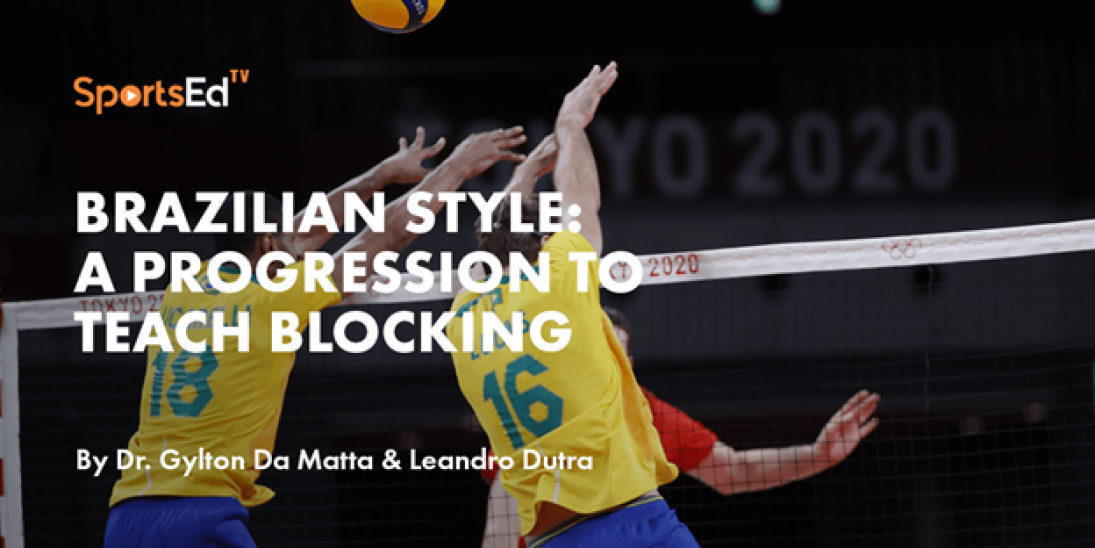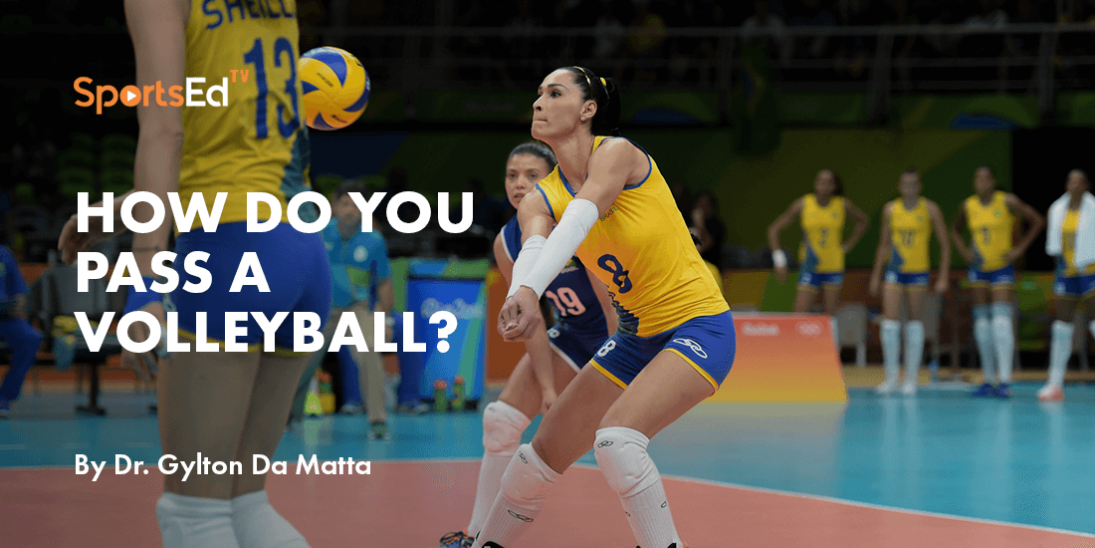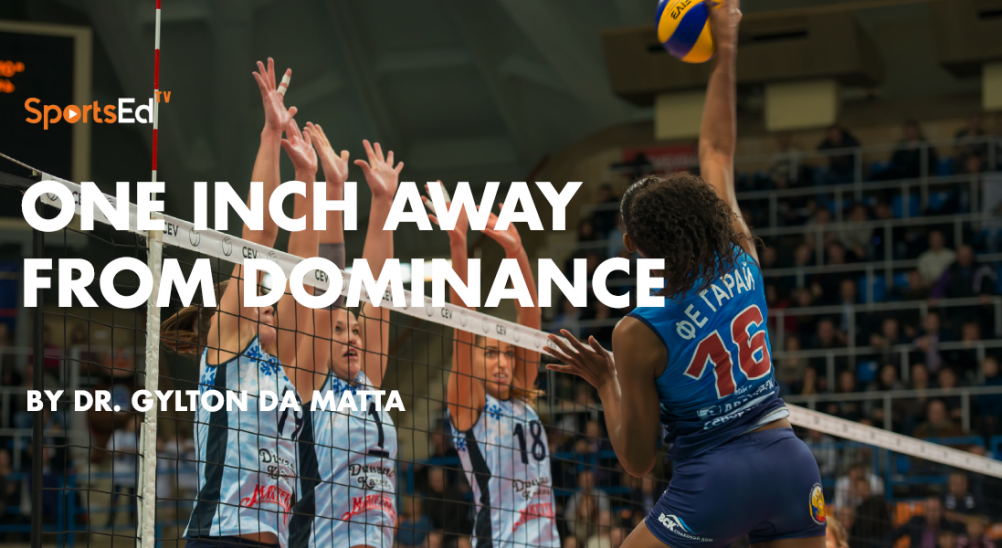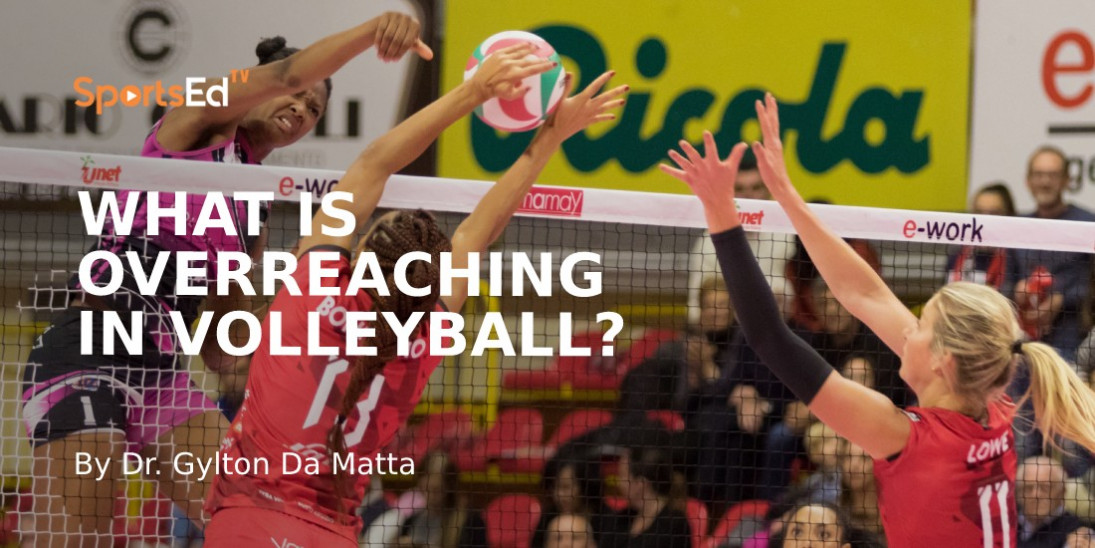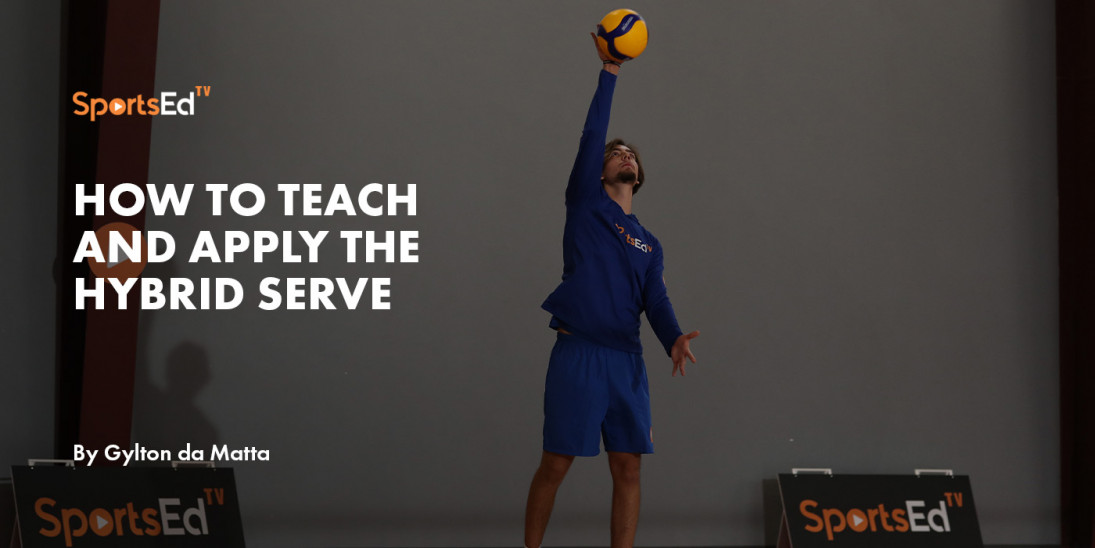Volleyball
Welcome and thanks for visiting...

Volleyball Overhand Attack: No unforced errors!
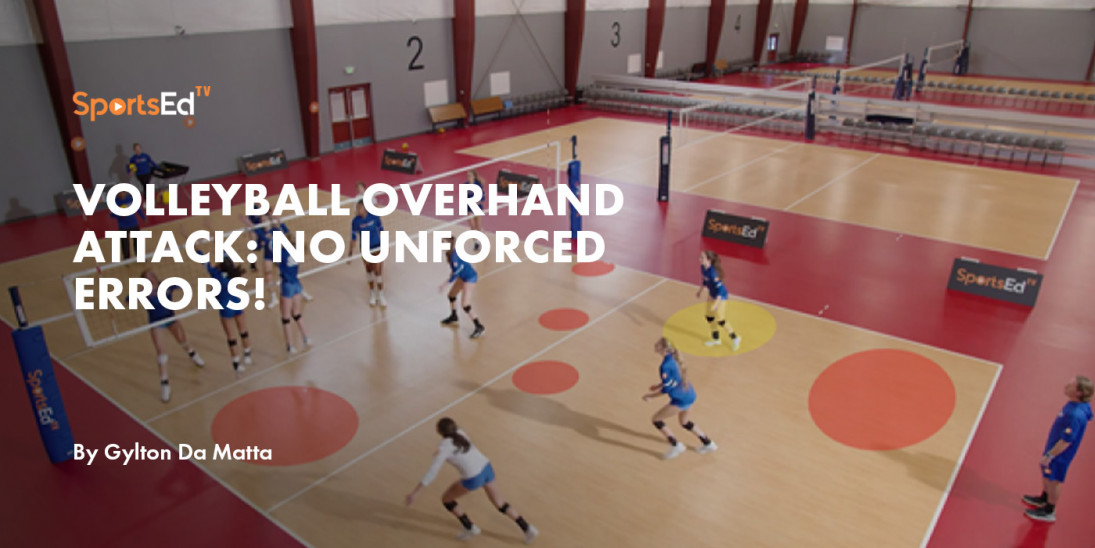
By Dr. Gylton Da Matta & Leandro Dutra Ph.D. Candidate
In any volleyball match, almost 30% of the points are conceded through unforced errors. Based on the level of difficulty of the serves, many times it is not possible for the setter to deliver a ball that can be hit in its best condition. Therefore, the attackers need to be resourceful to utilize other alternatives to attack the set and solve a new tactical problem. One of the overlooked skills that can guarantee a point (i.e., kill the ball or win a set for any skill level) is the ability of players to judge when, where, and how to perform the volleyball overhand attack.
Along with the player's ability to understand the game, comes their ability not to make mistakes, even in adverse situations. All players must never give up, by playing smart! Therefore, if there is no way to spike the ball, the volleyball player will find the empty spots on the court through the use of an overhand attack.
The overhand attack can be performed from the ground or with a jump. The outcome of this action can be as efficient as a spike in achieving the point.
We will present some thoughts in which coaches should know to design tactical situations and provide feedback to help volleyball players make the best decision on where to direct the ball.
When performing an overhand attack, the ball can be pushed over the net with a powerful jump set or with a soft placement, in different positions on-court (e.g., P4, P2, P5, and P1) behind the blocker or in front of the setter would be recommended spots. In addition, we have highlighted two more alternatives to avoid an unforced error: 1) push the ball at the middle of the court (i.e., at the middle dead, also called the “donut” or zone 8 the Data Volley® system) and 2) perform the overhand attack towards the blockers' hands to allow the rebuilding of a new attack action with more quality in another transition.
Below, we are looking at three different game contexts for how volleyball players can score points or make a tactical move that will allow them to win the rally! The first context is when the overhand attack is performed by position 4 (P4), normally executed by the outside hitters (see Figure 1).
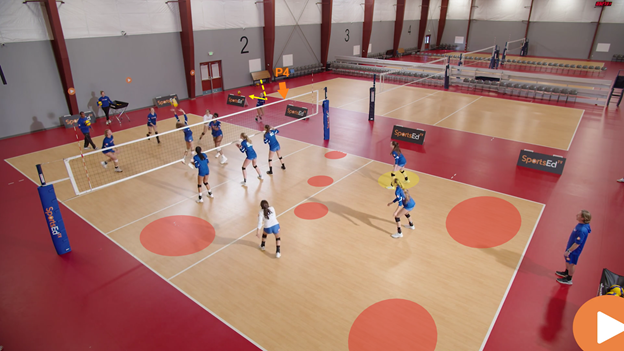
Figure 1. The red circles depict the different hot spots to perform a good solution through the overhand attack of position 4 (P4). The yellow dashed arrow represents that the ball is hit towards the blockers' hands and allows a new transition for the team.
In a game situation, hitters often face a well-defined double block. But (as we have mentioned before) if there is no way for this hitter to spike the ball, another tactical option should be to overhand attack the ball on P2, pretty close to the sideline or in front of the setter when she/he is back row. If this shot is executed correctly, it is possible that with the overhand attack a team will get a point or take away a good quick ball option. Moreover, the hitter can increase the possibility of achieving the point by directing the ball to the setter because another player will be responsible for the setting toward this action will be slower and more predictable, increasing the chances of achieving success in blocking or through a new transition.
The second context is when the overhand attack is performed by position 3 (P3), normally executed by middle players, blockers/attackers (see Figure 2).
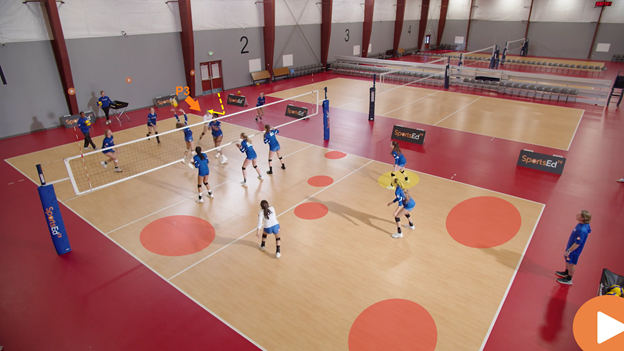
Figure 2. The red circles depict the different hot spots to perform a good solution through the overhand attack of position 3 (P3). The yellow dashed arrow represents that the ball is hit towards the blockers' hands and allows a new transition for the team.
When the overhand attack is performed behind the blocker. This shot needs to be executed with extreme accuracy. The idea is to place the volleyball at the gap opened by the middle blocker, close to P3. This area is very difficult to cover. Therefore, this precise overhand attack shot is a killer!
The third context is when the overhand attack is performed by position 2 (P2), normally executed by opposite (see Figure 3).
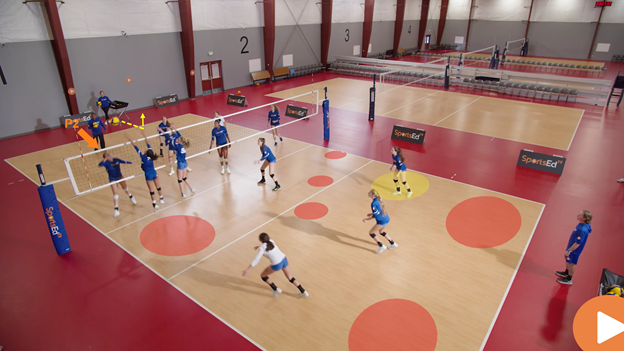
Figure 3. The red circles depict the different hot spots to perform a good solution through the overhand attack of position 2 (P2). The yellow dashed arrow represents that the ball is hit towards the blockers' hands and allows a new transition for the team.
The hitter can increase his ability to beat the block by mastering overhand attack shots to different hot spots. The big challenge is for the hitter to be able to “see” the positioning of the opponent's defending players in an anticipated way. Based on this, the player will be able to make the best decision to try to kill the ball or hindering the opponent's action, but mainly not committing an unforced error.
As most expert coaches and players have shared: Never make an unforced error!
This is what experts do! Therefore, this ability should be pursued by players and taught by coaches!
Main goal: To acquire the ability to execute the overhand attack, with accuracy and power (when needed).
Why/purpose: If in a tough rally the setter cannot deliver a hittable set, the hitter needs to perform an overhand attack in other to get a kill or execute a tactical shot. Expert coaches will say: “Better the ball and overhand attack!”
How:
- To judge if the set is not good and commit to seeing the tactical options (empty spots or weakness) of the opposing team.
- Perform full spike approach (i.e., whole skill), but using the overhand attack put the ball behind the middle blocker.
- Push the ball in the middle of the court. In the middle dead, also called “donut” (zone 8 the Data Volley® system).
- Keeping both hands very high, the focus on placing the ball in the front area of P4 or P2 towards the sideline.
- Push the ball into the blocker's hands (upwards) to allow the build of a new transition.
- Remember that the overhand attack ball on the setter (back row position or zone 9 the Data Volley® system) can always compromise the opposing team's transition.
- Develop the ability to anticipate the positioning of opposing players and be able to overhand attack at different hot spots (e.g., front line, donut/zone 8 Data Volley® system and deep on-court).
Figure 4 illustrates a general diagram of the main hot spots where volleyball players should be able to perform an overhand attack. Furthermore, it highlights the motor solution of the hitter of the ball in the blocker's hand to build a new transition through the overhand attack (e.g., the yellow dashed arrow).
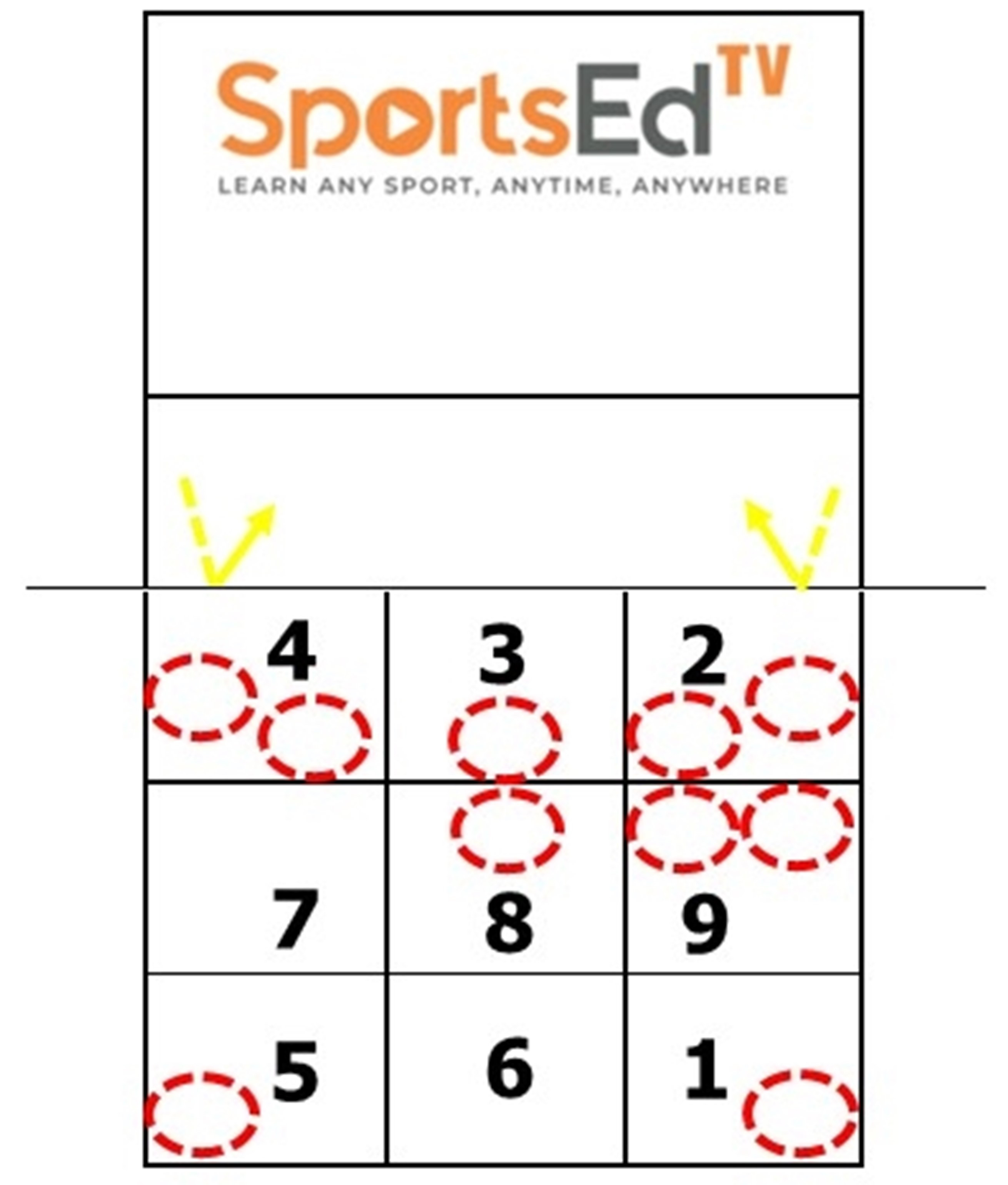
Figure 4. A general diagram - the red circles depict the different hot spots to perform a good solution through the overhand attack within the Data Volley® system's on-court zones. The yellow dashed arrow represents that the ball is hit towards the blockers' hands and allows a new transition for the team.
Many players, when they see that they have been given a bad setting, tend to want to hit the ball at any cost. This is not the best tactical decision to make. Therefore, an overhand attack becomes a great alternative. We would like to encourage coaches to design different tactical situations during practice, using the three contexts mentioned before, to develop the ability to see the opposing team and provide feedback for players to discover hot spots according to different tactical situations (i.e., explore and exploit different technical and tactical applications through overhand attack). The key point here is not to make mistakes and reduce the team's unforced errors!
Follow us on social media and for more information about overhand attacks watch our educational video, please.
Authors
Leandro Dutra, Ph.D. Candidate Federal University of Minas Gerais-Brazil. dutraln@gmail.com
Author of chapter Tactical evaluation in volleyball a multicultural expertise analysis. In: 21st Century Volleyball Expertise. (In press) SportsEdTV publisher.
Gylton Da Matta, Ph.D. Colorado State University and Volleyball Executive Director SportsEdTV. gdamatta@sportsedtv.com
Da Matta, G.B. (In Press). (Editor) 21st Century Volleyball Expertise. SportsEdTV Publisher: Miami, FL, USA.
